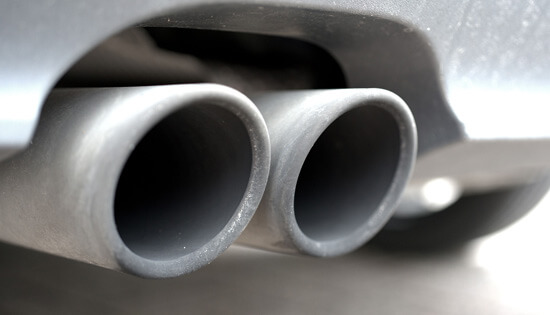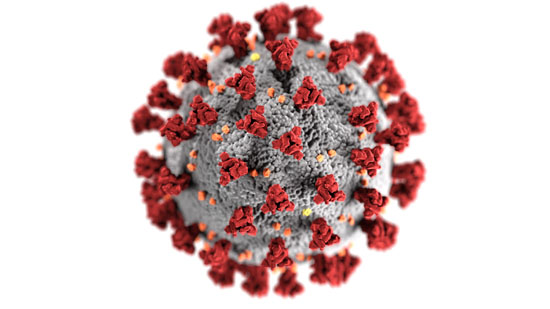
Electric Vehicles, Air Pollution and Health
The switch to electric vehicles has other beneficial effects above and beyond reducing carbon dioxide emissions from personal transport. Conventional internal combustion engine vehicles also produce pollution, notable nitrogen oxides and particulate matter, that have seriously detrimental effects on local air quality. Poor air quality can affect people’s health, especially irritation of the respiratory system and lungs and some forms of cancer. Improving local air quality is therefore a major issue for many local councils, and encouraging the switch to EVs is a key means for addressing this. Below we look in more detail at these tailpipe pollution issues.
What are NOx emissions?

Why are NOx emissions harmful?
Both nitric oxide (NO) and nitrogen dioxide (NO2) are hazardous to human health. As gases, they can be easily breathed into the lungs. NOx pollution can cause or exacerbate asthma, decrease lung function, increase the risk of respiratory conditions (such as flu and pneumonia), and increase response to other allergens. The UK’s Clean Air Strategy states “Air pollution is the top environmental risk to human health in the UK, and the fourth greatest threat to public health after cancer, heart disease and obesity.” In the UK alone, air pollution is responsible for 40,000 premature deaths annually.The NOx emissions can also undergo chemical reactions in the lower atmosphere which form nitric acid and ozone. You may know this from the acrid smell that comes from photocopiers – this is ozone. Both nitric acid and ozone are known to damage lung tissue.
Nitrogen dioxide, NO2, is a pungent, brown gas – you may remember this from chemistry lessons at school, but always made in a fume hood. Nitrogen dioxide is important in the formation of smog and is responsible for the visible brown haze produced.
How do EVs reduce NOx emissions?
With no internal combustion engine, electric vehicles produce no NOx emissions. They therefore save the NOx emissions that would have been produced from an ICE vehicle.Diesel engines produce particularly large volumes of NOx emissions, 0.96 g per mile. Petrol engines are less harmful, producing 0.48g per mile. This may not seem a lot, but with the average driver clocking up 10,000 miles per annum, a diesel car will emit 10kg of NOx every year.
An alternative way of seeing this would be that a typical urban A-road carrying 20,000 vehicles per day would be producing 3.5 kg of NOx emissions along every metre of road every year.
Clearly switching to an electric vehicle is a sensible means of reducing this pollution and associated health consequences. The Government’s Clean Air Strategy estimates that the costs of air pollution to society could be reduced by £1.7 billion every year.
What are particulates?
Particulates are very small solid particles that are suspended in the air. They are formed from the combustion of fossil fuels in ICE vehicles, with other particulates coming from road dust, and released from brake pads.Particulates are classified by the size of the particles. Particles that are 10 micrometres (that’s 10/1000 of a millimetre) are called PM10s. Even smaller particles of 2.5 micrometres are called PM2.5s. For context, a human hair (and solar cells, incidentally) are about 100 micrometres.
Particulates accumulate on buildings and other surfaces, which has a visual impact by making the environment look dirty. It can be a considerable expense to clean buildings to remove accumulated soot and other particulate matter.

Why are particulates harmful?
Because particulates are so small, they can be inhaled deep into the lungs and even enter the bloodstream. The World Health Organisation recognises particulates as a carcinogen (that is to say, it causes cancer). They can also cause respiratory issues and heart attacks.
How do EVs reduce particulates?
Diesel vehicles produce the most particulates pollution at 0.064 g/mile. Petrol vehicles produce approximately 20 times less particulate pollution at 0.003 g/mile.
A typical diesel car will therefore emit 640 grams of particulate matter every year. Alternatively, a major A-road carrying 20,000 vehicles per day will release 230 grams of particulates every year, along every meter of the road.
It is important to note that particulate emissions from EVs are not zero, as small amounts of particulates are released from brake pads. This has been picked up by some elements of the media (we won’t publicise them with a hyperlink) as a means of criticizing the switch to electric vehicles. However – and this is so simple, it barely needs saying – particulate emissions from EV brake pads will be many times less than particulate emissions from a vehicle with both brake pads and an internal combustion engine!

Coronavirus and Air Pollution
Outdoor air pollution kills at least 7 million people annually worldwide. Research in the US and Italy shows supportive evidence that cities with long-term pollution exposure for 15-20 years had significantly higher mortality rates from COVID-19. Their analysis suggests that air pollution particles may be acting as vehicles for viral transmission. A study by researchers at Harvard University found that an increase of just one microgram per cubic metre of PM2.5 corresponded to a 15 per cent increase in deaths from COVID-19. A similar study from China found that places with modestly higher levels of nitrogen dioxide pollution, 10 micrograms per cubic metre, in the five years before the pandemic had 22 percent more COVID-19 cases, while higher levels of small particle pollution saw a 15 percent rise.
Air Pollution and COVID-19 risks
Air pollution is also known for weakening the immune system, compromising people’s ability to fight off infection. This knowledge is not new; a study from 2003 found that patients with SARS were 84 per cent more likely to die if they lived in areas with high levels of pollution. Decades of research has found that air pollution damages the lungs and heart. The WHO has found that exposure to air pollution increases your chances of becoming severely affected by COVID-19. Pollutants inflame lungs, which makes catching COVID-19 more likely. This is a cause of concern as rising levels of pollution after the lifting of lockdown could increase the likelihood of contracting the disease.
Inequality in Air Pollution and COVID-19
COVID-19 is more dangerous for people of colour, in low-income communities that tend to live in areas of higher levels of pollution. A US study found that some ethnic minorities are disproportionately exposed to air pollution, mainly caused by the consumption by white Americans. In the US, black and Hispanic individuals are typically exposed to 56 per cent and 63 per cent more PM2.5 pollution than they produce through daily activities and consumption. In comparison, non-Hispanic white individuals are usually exposed to 17 per cent less pollution than they produce.

Air Pollution in lockdown
During lockdown in Britain, traffic reduced by 73 per cent – back to the traffic levels last seen in 1955. During lockdown, worldwide factories were mothballed and cars were kept off the roads, resulting in drastically lowered global pollution levels. Data collected from 10 key global cities during the peak of reported COVID-19 cases, found that 9 out of 10 experienced a PM2.5 reduction of between 9 per cent to 60 per cent. London had an average PM2.5 during lockdown of 16.2 and experienced a decrease of 9 per cent. Delhi had a level of 32.8 and experienced a reduction of 60 per cent of PM2.5 particulate matter.
Benfits of Improved air quality under lockdown
Chinese scientists suggested that the 25 per cent reduction of city air pollution during the lockdown might have prevented between 24,000 and 36,000 early deaths over one month. Another analysis concluded that the health benefits from city lockdowns outnumbered the confirmed deaths caused by COVID-19 in China. The Centre for Research on Energy and Clean Air calculated that there had been 11,000 deaths prevented from air pollution, the UK had prevented 1,700 deaths in the month up to 24th of April. The fact that the unintentional reduction in air pollution under lockdown prevented deaths worldwide illustrates how normalised the massive death toll from air pollution has become. It also shows us what can be achieved if we shift to electric vehicles and renewable energy.
EVs to reduce air pollution and COVID risk
People that have been directly affected by air pollution such as having respiratory conditions in the UK reported easing of symptoms during the lockdown in the UK. A national survey carried out in May in the UK found that 47 per cent of people have become more concerned about air pollution since the COVID-19 outbreak. Another survey found that people have become more worried about air pollution as a public health issue than obesity, smoking or alcohol and drugs.
A survey by the Global Action Plan found that 62 per cent of people want the government and local authorities to invest in plans to tackle air pollution and traffic more urgently than before the outbreak of COVID-19. Research found that 45 per cent of drivers are reconsidering their plans about EVs due to the radical improvement on air pollution from reduced traffic. Of these, 19 per cent said their next company car or private purchase will be an EV. Twenty-six per cent said they intend to become an EV driver within the next five years.
There is a significant opportunity here. Switching to electric vehicles can reduce longstanding impacts of air quality on health. But importantly, they could also reduce the risk of COVID-19 itself for individuals and within the broader community.
Find out more ….
- We look compare EVs and ICE vehicles in this handy infographic
- If you are thinking of going electric, we’ve produced a guide to hybrids versus full-electric vehicles
- And if you do purchase an electric car, you’ll be needing a home charger!



Sorry, the comment form is closed at this time.